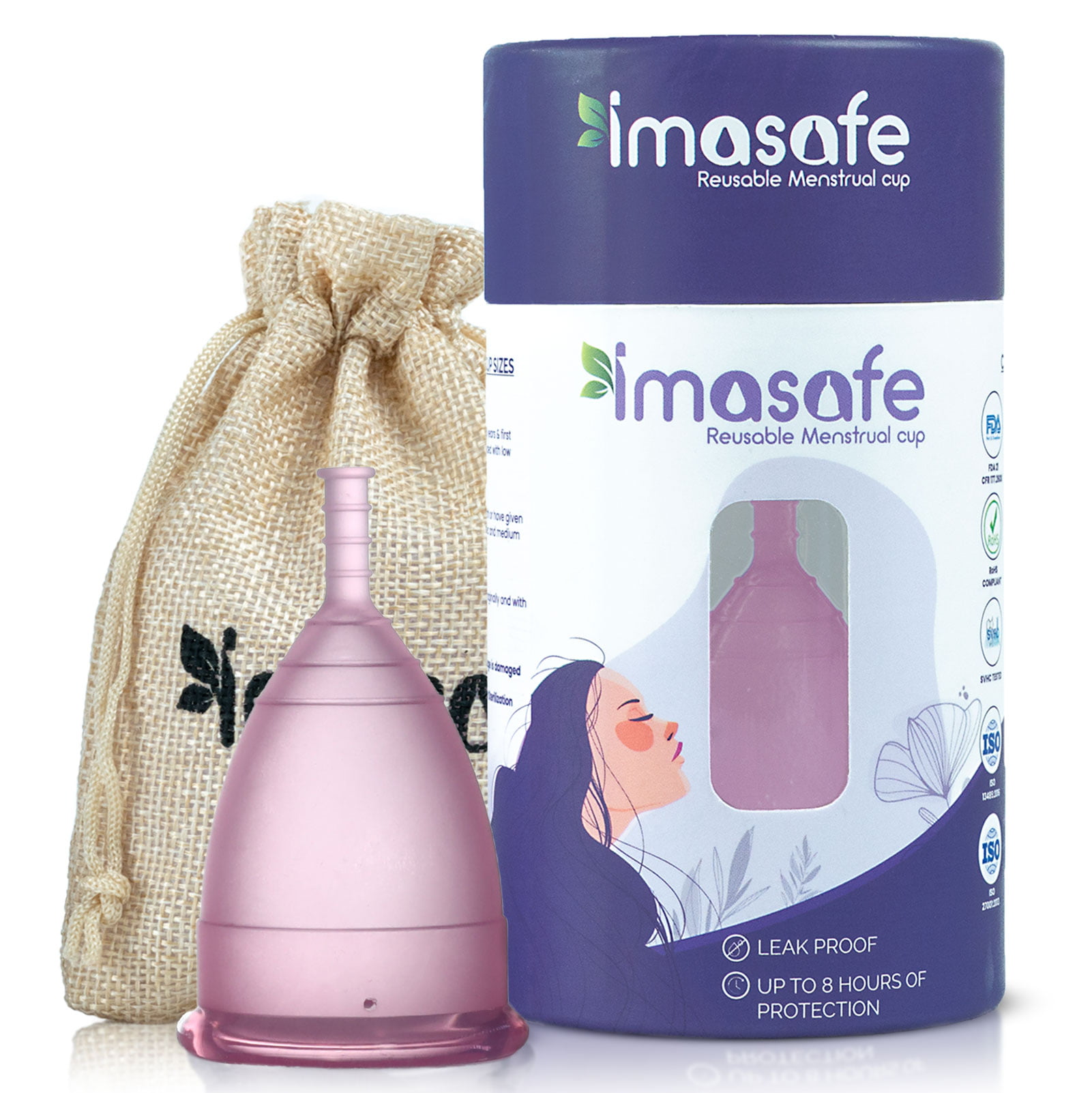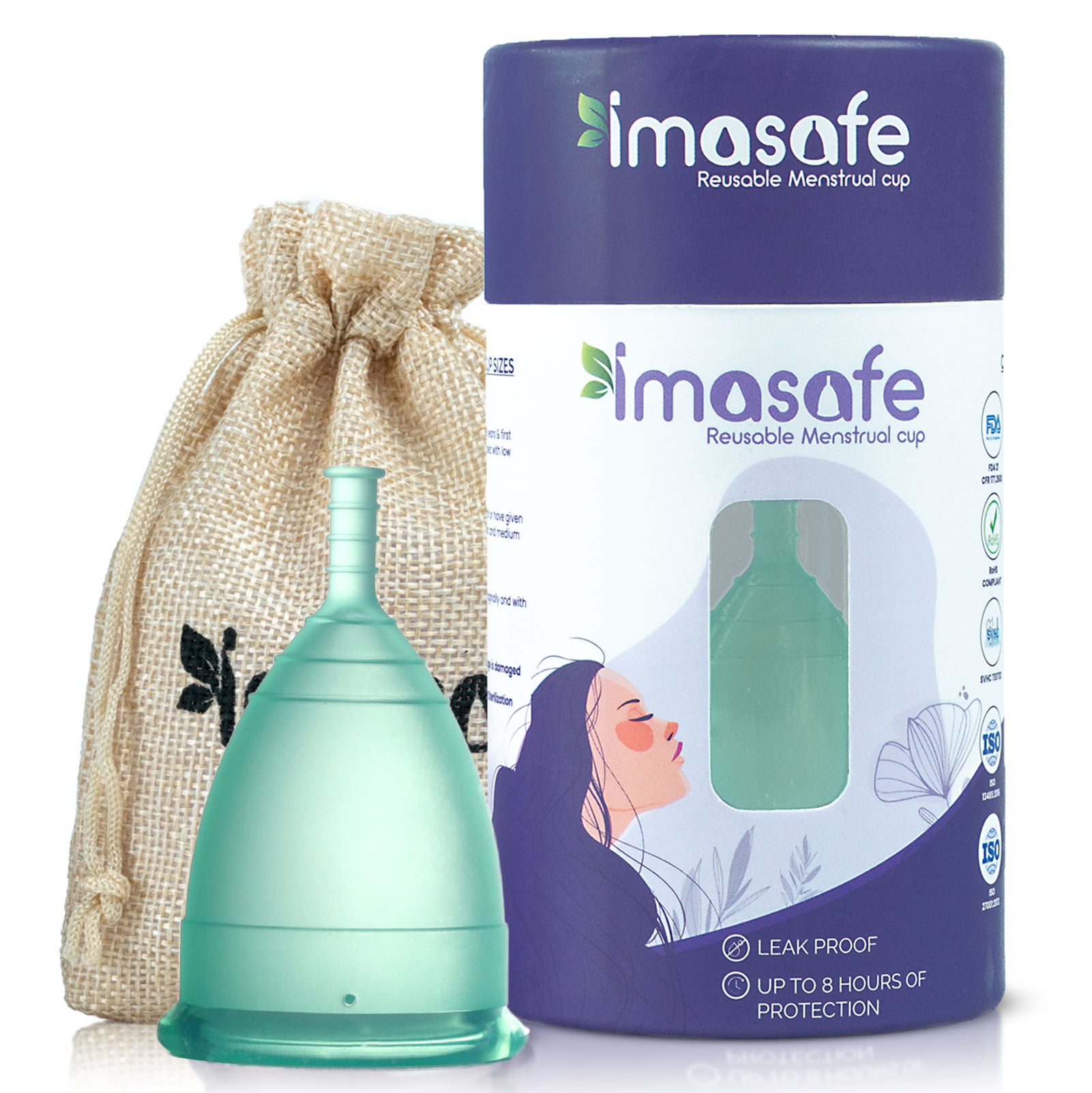Your Questions our answers
The menstrual cup is a feminine hygiene product made of 100% medical grade silicone. The cup is inserted into the vagina and works by catching and collecting menstrual blood. If used correctly, your menstrual cup is a safe and comfortable for feminine hygiene.
Yes, Menstrual cup is better than the sanitary Pads & tampons. Because menstrual cups collect rather than absorb blood, you’re not at risk of getting toxic shock syndrome (TSS), a rare bacterial infection associated with tampon & pads use. Menstrual cups hold more blood. A menstrual cup can hold about one to two ounces of menstrual flow.
Your menstrual cup can’t migrate into your uterus or get “lost” inside you.
This is a big fear for new users. The answer is yes and no. If a person has a high cervix and purchases a cup that is too small or too short, the cup may ride up and sit higher. This may make the cup difficult to reach or hard to find in some cases. This is the importance of locating & measuring the cervix to find a cup that will suit your body. However, rest assured that a menstrual cup cannot get lost because there is no way it can travel to other areas of the body. If the menstrual cup is hard to reach, try a different position. Sit, stand, or squat, and push with your PFM like you’re having a bowel movement to bring the cup closer to the vaginal opening. A series of pushes may need to be done to bring the cup close enough.
If you feel like the menstrual cup is going to fall out or it keeps sliding down, make sure that it has opened properly and has created a slight suction. Fit issues might also be causing this to happen. A cup that’s too small might not be making good contact with the vaginal walls or might not be creating a good seal around the cervix. If a cup is too large, the vaginal walls and PFM might be causing it to be pushed out. Selecting the proper size or shape for your individual situation should eliminate this issue.
General Recommendations are that you should empty a menstrual cup two times a day or every 10 to 12 hours. If you feel that you have to empty it more frequently, do so. This will help you to maintain good hygiene.
For the beginner, it will be a little messy. There will always be blood, just like there would be with a disposable menstrual product. However, with practice, it will become easier to insert and remove. It will also become less messy to handle as you become more comfortable with using a menstrual cup.
The menstrual cup has nothing to do with your menstrual pain or cramps. Experiencing pain during the first several days of your periods is normal if it doesn’t interfere with your normal life. If you suffer from period cramps or if they become worse, make an appointment with your doctor to figure out the reason.
In general, menstrual cups should not leak. If you notice blood leakage, you might have placed the cup incorrectly. During sleep or exercise a cup may shift and it can cause leakage. Make sure you picked the correct cup size.
You should boil it for 5 to 10 minutes only after your period ends. Boiling it more frequently may result in damaging the silicone.
Sometimes, you may need to empty your menstrual cup while in a public place. Don’t worry, you can remove and empty the cup in a public restroom. Wash your hands with soap, remove the cup, and empty it. Wash the cup with water. You can carry a bottle of water with you in order to wash the cup over the toilet. Don’t forget to wash your hands before you do it.
The menstrual cup is a good choice if you want to do sport while you’re on your period. If it is inserted and used correctly, it will not leak or cause any discomfort while training. Though cups can make it possible to train during menstruation and feel comfortable.
Yes, you can use a menstrual cup if you have an IUD. It won’t interfere with your IUD working. Similar to a tampon, a menstrual cup sits inside the vagina, whereas your IUD sits inside the uterus.
The menstrual cup cannot cause infections.
Some people get the hang of using a menstrual cup right away and others need a few cycles to get used to it. If you are among the latter, backup menstrual products can be used until you’re comfortable with inserting and wearing a cup without one. If you would like to refrain from disposable products, cloth liners, and pads are good backup options.
Menstrual cups can be worn while bathing, showering, and swimming without inconvenience.
The use of menstrual cups can’t be suggested while having sex.
How often to empty your menstrual cups depends on your cup size and your flow. When you first try a menstrual cup, you will realize pretty soon when to empty it. The first day you wear it, check 3h later and that will give a good indication of how often you need empty it. The flow is usually different on each day of the cycle.
If you have gone through the process of checking that the cup is open and positioned correctly but the cup is continuing to cause you discomfort, it may just be that you have not found the perfect menstrual cup for you. There are menstrual cups in all sorts of shapes, sizes, diameters, lengths, and firmness. By determining what is causing the discomfort, you can adjust your search for the perfect cup for you.
Yes, PCOD/PCOS patients can use menstrual cups. It’s also important to access that because PCOS and PCOD can cause irregular cycles and heavy bleeding, the menstrual cup can actually provide a lot of freedom to women who deal with such medical conditions.
From the age of 18-45.
In short, no, using a menstrual cup will not make you lose your virginity. There is huge confusion, about what does it mean to be a virgin? In many cultures around the world, virginity is thought of as something biologically connected to the hymen and whether it’s “intact.” The truth is, the only way someone becomes non-virginal is through the act of sex.
The short answer is no, due to the complexity of pregnancy, it is important to wait until your postnatal checkup (usually around six weeks postnatal) and doctor approval, before using a menstrual cup after pregnancy.





